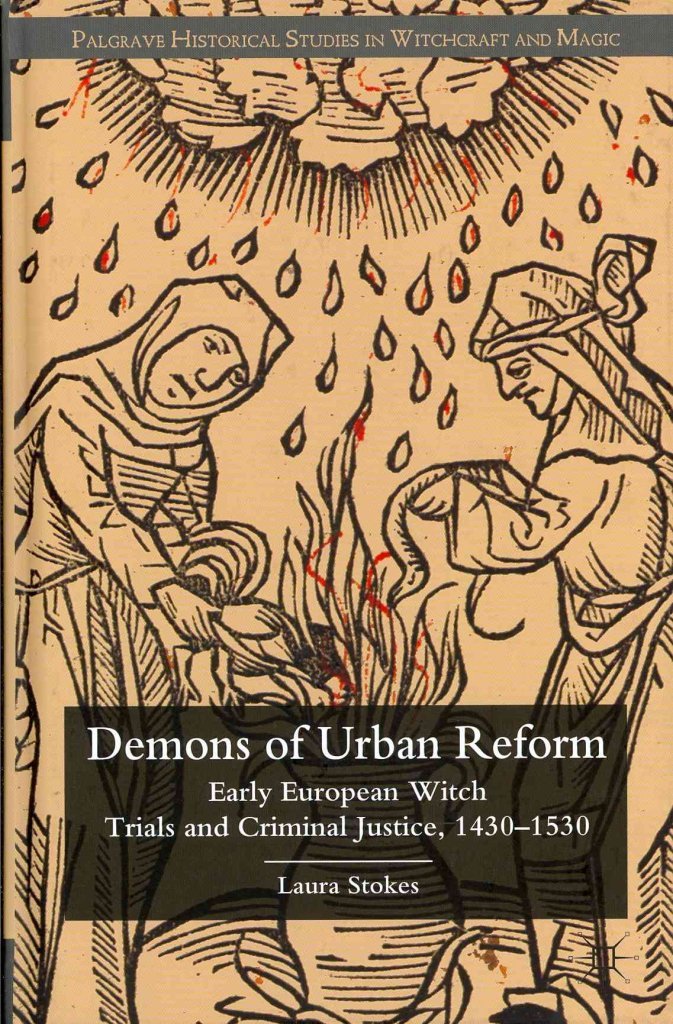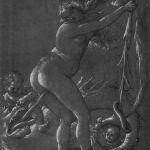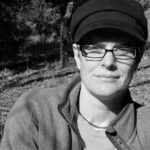Interview by Mackenzie Cooley
Witch hunts flared across Europe from 1426 to 1754, killing somewhere between 35,000 and 1 million people, most of whom were women. The executions began on a relatively small scale. In early trials, often only one or two victims died for suspected magical crime. However, these small hunts set a precedent for much larger trials, which executed numerous victims from 1560 to approximately 1650. From Scotland to the Alps, trials, prosecutions, and notions of witchcraft conformed to local norms, varying from region to region. Today, early modern historians rely on archival trial records to piece together how social upheaval led to the persecution of witches. In this interview, Professor Laura Stokes of Stanford University discusses the connections between female sexuality and the witch craze.

Mackenzie Cooley: How did early modern Europeans conceptualize witches? How was the witch’s role in the community tied to notions about sexuality and magic?
Laura Stokes: Common people and theologians alike thought the witch to be sexually ravenous, terrifying insofar as she was sexual. Deviant female sexuality was expressed throughout the witchcraft stereotype. For instance, the famed Witches’ Sabbath included a satanic night-time assembly to which participants flew on broomsticks or goats, danced in the round, and declared allegiance to the Devil by kissing his anus. The role of sex in witchcraft had been particularly vexing to the late medieval clerics who wrote extensive demonologies (scholarly tracts on demons’ influence in the world). Consequently, in trials, interrogators often demanded that accused witches describe their pact with the Devil; sex with demons often sealed that pact.
The period of the witch hunts in the sixteenth and seventeenth centuries followed the Reformation hiatus (c. 1520-1560), a generation during which there were very few witch hunts. Early Modern Europe was then engaged in an intense, transcontinental reworking of social rules. In the medieval period, women were represented as tending toward moral extremes, expressed through the bipolar model of fallen women and virginal saints. Europeans then understood female sexuality as voracious and frightening. With the Protestant rejection of monasticism and de-emphasis on celibacy, Europeans transformed both their female sexual ideal and its antithesis. The Reformation promoted the married matron as female apotheosis, and the witch hunts demonized the simple fornications of the previous age.
MC: How was early modern European magic gendered?
LS: At the broadest level, early modern witches were most often women. Local beliefs often decided how rural magic understood as witchcraft was gendered. As a result, what was perceived as male versus female magic varied considerably from one region to the next. Literate magic—conjuring spirits and manipulating natural powers as a magus, for instance—was often gendered male, and that’s probably one reason why male witches were likely to sign demonic pacts with a blood-dipped pen, while female witches were likely to sign with their flesh. In many regions, as for example in northern Italy, female witches were associated with fertility. There was a real, social practice of fertility magic outside the largely theoretical demonological definitions of witchcraft. We do not get our best glimpses of this practice from the witch hunts, however. We find it in places like Venice, that rejected witch hunting but did not reject active inquisitorial control over magic. In almost every one of these quotidian cases, magic was practiced to shape human fertility. In these regions, love magic, magical attempts to improve fertility, and binding magic were the norm. Practitioners of this array of sex magic were not all women—many were priests—but the particular ways that they interacted with the supernatural were strongly gendered.

MC: To depict witches, early modern artists had to decide on their appearance. What was a witch supposed to look like? What impact did images of witches have on the hunts?
LS: Sexualized images of both young and old female witches fueled concern about magic. Master painter and printmaker Albrecht Dürer and his student Hans Baldung Grein were responsible for canonical witch images. Both artists produced images of erotic witches in Nuremberg, a town whose patrician lords declared a reluctance to punish diabolic magic as a real crime, despite being surrounded by towns that pursued witchcraft trials. This provided the cultural backdrop for the artists’ rendition of witches: voluptuous women with dragon tongues in inappropriate places. These images read to my prudish, modern, post-Puritanical mind as fun early modern pornography.

Such racy witches contrasted with the reality of the witch hunts, whose victims were poor, marginalized, and often older. Even so, these powerful images continued to circulate as the hunts picked up after the Reformation hiatus. They lingered in the minds of accusers and prosecutors when they confronted the terrifying witch who could allegedly harm an entire town with her powers. This cultural dissonance still plays out in Disney witches, who sometimes appear beautiful and young when their real shape is hideous and old. These modern witches, like the early moderns on whom they were loosely based, are caught between two forms, as if we still cannot decide whether the witch is young and beautiful or old and haggish, and she needs to be both at once somehow.
MC: How did this witch trope emerge in trials?
LS: The witch stereotype failed to match up completely with narratives that real women accused of witchcraft told under torture. In the fourteenth century, the Paris theological faculty had declared that magic was conducted by demons using their superior natural talents at the behest of humans. This view held that the human soul was degraded as a result, because demons were presented with honor that was due to God. Thus, powerful clerics promulgated a description of magic as fundamentally diabolic. This was not, however, at the heart of how ordinary people understood witches.
When fifteenth century interrogators pressured women confessing to witchcraft to describe their relationship with the Devil, the interrogators’ conception of witches was alien to the magical worldview of ordinary people. Their beliefs can still be read in the accusations they made—that a witch rode the back of the wolf, holding its scruff in her hands and letting it take her where it would, or that she ran with inhuman swiftness along the edge of the woods at dawn, with her skirts gathered in her hands, and then there came a storm. It is only later in the process, in the trials and after interrogation, that the Devil enters the picture with the application of the witch stereotype.
The study of this history offers us a window into early modern quotidian sexuality. For instance, in 1532, Dilge Glaserin was arrested for witchcraft in Basel. Her confession centered on seduction and began with despair. She reported that she first became a witch some years ago after her husband had died. She had been left alone with six small children to care for and the troubles piled up: her in-laws would not help her, she had no money, she feared the children were going to starve. In her extremity, she despaired and decided to kill herself. In the sixteenth-century Swiss Confederacy, suicide was dreadful, immediate self-damnation, as it ensured that one went straight to Hell without hope of even purgatory. At this perilous moment of despair, Dilge was visited by a young man. He asked why she considered causing herself such harm. ‘Believe in me and I’ll take care of you,’ he said. Dilge recounted that, at that moment, with her choice between suicide and this young, fair-seeming man who had offered her what she wanted—a husband again—she said yes and gave herself to him. At that point she described him as her Devil, and she said his name was Frank. This Devil named Frank appeared to be an ordinary man in all her descriptions: he wooed her when she was vulnerable, left her when she needed him, and never really did take care of the children. He wasn’t the best example of manhood, and so he fits the role of the Devil pretty well: one expects the Devil to abandon even his witches.
Dilge’s Devil was a product of both her experiences and stories she had heard, composed under tremendous pressure to provide a confession of witchcraft that fit both the local and demonological understandings of witchcraft. This latter was the essence of diabolic magic as understood in the witchcraft stereotype. The witch is a witch not only because she magically devours, or destroys, or rides wolves, but also because she has sex with the Devil.
MC: In light of the preponderance of women among those accused of witchcraft, was early modern witch hunting woman hunting?
LS: As to whether witch hunting was woman hunting, the simple answer is no; the more complicated answer is that yes, in lots of cases it was. In the witch hunts, female sexuality became utterly diabolic in a way that left little to be redeemed, at least in this realm of fear and imagination. Scholars have contended that a particular version of the bad mother who was both infertile and sexually voracious lay at the heart of the witch craze. Whether that is true for the whole period or only for the later sources on which this scholarship is based is up for debate. I think that as the hunts were waning the witch concept became even more extreme, sexualized, and female. By contrast, during the earlier mass witch hunts, the gendered category of the witch broke down and everyone was vulnerable. In fact, that inclusive vulnerability was one of the mechanisms that stopped the hunts as accusations came too close to the those in power.
Witch hunting was a kind of communal attack on female independence, strength, and societal power. 70% of the victims of witch hunts were women, and in some regions that number is as high as 90%. In German-speaking Switzerland, in the beginning the terms for witches were exclusively female (e.g., die Hexe, die Unholde) and they had to come up with compound terms to even talk about men in such situations. Magic and witchcraft were deeply gendered, and historically that gendering was not neutral, but instead carried a considerable impact.
 Laura Stokes is an Associate Professor of Early Modern European History at Stanford University. Her first book, Demons of Urban Reform: Early European Witch Trials and Criminal Justice, 1430-1530, examines the origins of witchcraft prosecution in fifteenth-century Europe against the backdrop of rising prosecution of crime and increasing measures of social control. Her current project, tentatively titled A Social History of Greed in the Age of the Reformation, examines quotidian economic culture in the fifteenth to seventeenth centuries.
Laura Stokes is an Associate Professor of Early Modern European History at Stanford University. Her first book, Demons of Urban Reform: Early European Witch Trials and Criminal Justice, 1430-1530, examines the origins of witchcraft prosecution in fifteenth-century Europe against the backdrop of rising prosecution of crime and increasing measures of social control. Her current project, tentatively titled A Social History of Greed in the Age of the Reformation, examines quotidian economic culture in the fifteenth to seventeenth centuries.

Mackenzie Anne Cooley is a PhD candidate in the Stanford University Department of History, minoring in Feminist, Gender, and Sexuality Studies. Her dissertation explores perceptions of breeding and reproduction in the sixteenth century, and what that meant for the Spanish Empire. Her research has been supported by Fulbright and the Mellon Foundation/CLIR.

NOTCHES: (re)marks on the history of sexuality is licensed under a Creative Commons Attribution-NonCommercial-NoDerivatives 4.0 International License.
Based on a work at www.notchesblog.com.
For permission to publish any NOTCHES post in whole or in part please contact the editors at NotchesBlog@gmail.com




